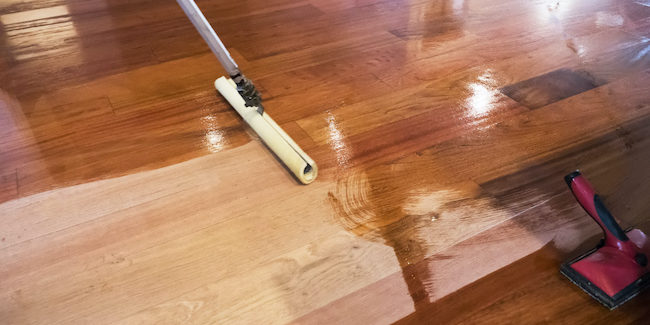Of course, as with any choice you make, there are some very distinct drawbacks to staining as well. Understanding what can possibly go wrong with the process can help you to avoid potentially costly mistakes down the road.
Here are some of the cons to staining that any homeowner should be aware of before they proceed:
· Accentuates sanding marks – Sanding is a necessary step in order to prepare your hardwood to accept stain, but when done incorrectly it can leave a series of scratches and gouges in the wood. When stain is then applied to that wood surface, the pigment in the stain seeps into all of those fine marks, showing up darker in those areas and making them stand out even more. The result can be a murky and busy overall look.
· Not all woods are meant to be stained – There are certain types of wood, including maple, birch and pine, that don’t take well to stain. These woods are very tight-grained, meaning there are very few openings into which the stain pigment can settle and provide coverage. At the same time, pine and other coniferous woods also contain sap, which will actively resist stain. Staining these types of woods can result in areas of beading where the stain is repelled, making for a messy look.
· Tendency for “bleedback” – unlike paint, stain cannot be corrected or darkened by applying more layers. No matter what type of wood you choose, it can only absorb a certain amount of stain. Once it reaches its limit if you continue to apply the stain it will simply rise back up to the surface, resulting in what is known as “bleedback”. The same effect can happen if you go over a layer of stain with a layer of finish that is not compatible. In either instance, you’ll be left with unsightly pockets of beading and spotting that will mar the overall look of your floor.
· Staining is a very time consuming process – one of the biggest drawbacks to staining, and one that is very often overlooked by homeowners, is the sheer amount of time the process can take. If a stain coat is not completely dry it won’t be able to accept a layer of finish and if the stain and finish do not bond the finish can smudge and even peel off entirely. The only recourse will be to sand the floor again and start over. In order to dry thoroughly stain requires a minimum of 48 hours in the ideal conditions of heat, humidity and air movement. Since it can be difficult to achieve those ideals in most cases, you’re more likely to need at least 72 hours for your stain to dry. Even the slightest variation in temperature, humidity and air movement can have a drastic effect on the ability of your stain to dry properly. Once the stain is dried, then you’ll need to apply a finish coat and wait for that to dry as well, all of which can mean up to a week or more for the entire process to be completed.

